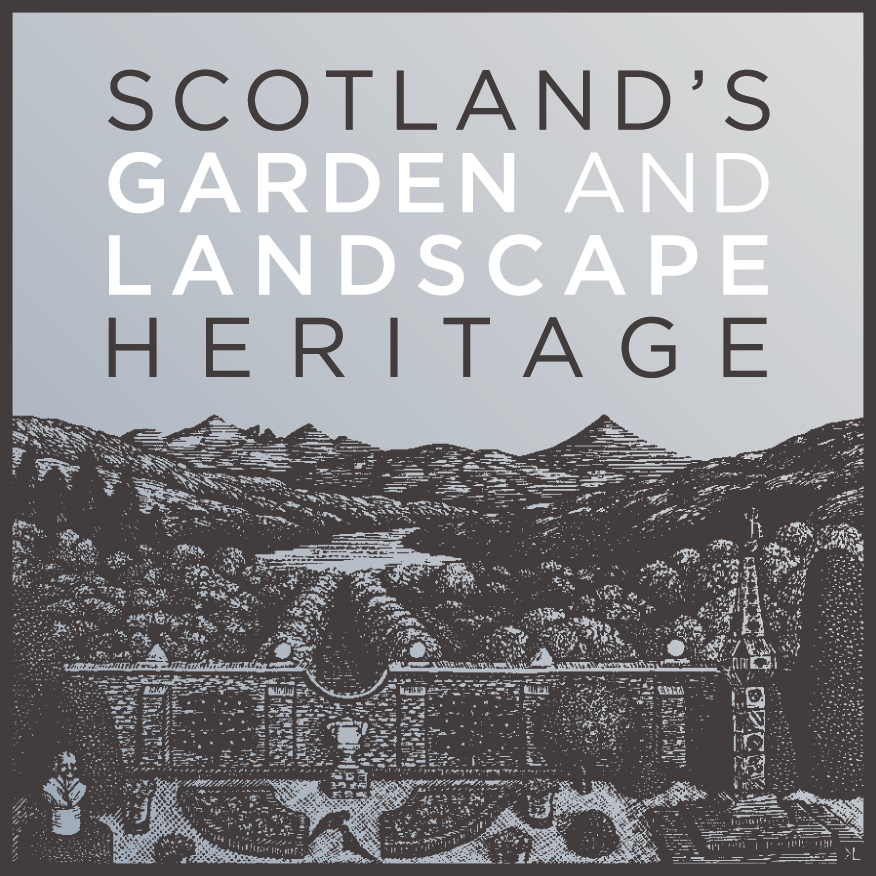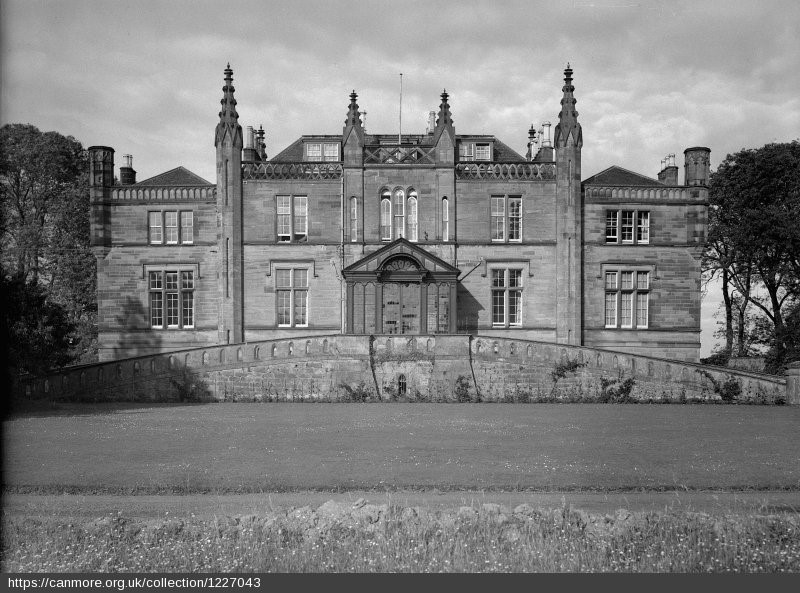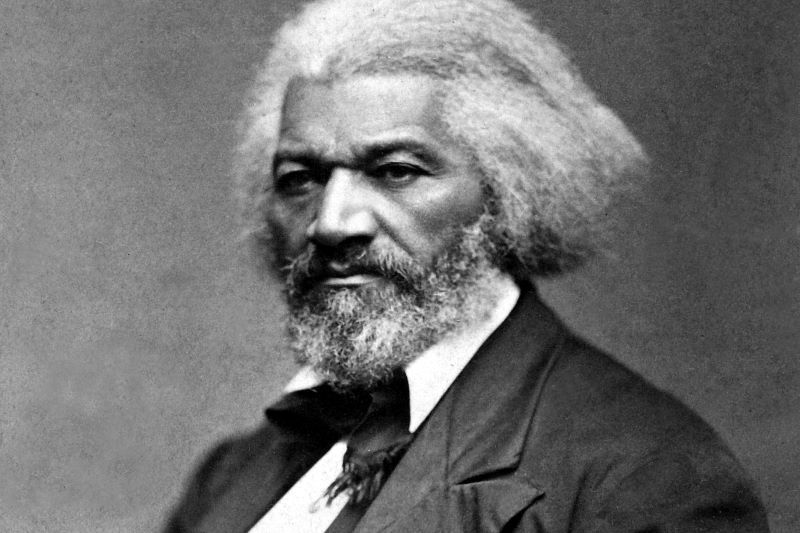As Scotland’s Garden and Landscape Heritage (SGLH) Chairman I am very proud to present this story about Parkhill and Millfield by Marilyn Scott and Sue Hewer, volunteers on the Glorious Gardens team assigned by SGLH to the recording of non-inventory designed landscapes and gardens in the Falkirk area. The Glorious Gardens project was launched in Falkirk in 2015 and was funded by Historic Environment Scotland. This is one of the 16 sites covered by SGLH in this area. A similar project was carried out in the Clyde and Avon Valley, and we are currently planning a third phase, which will focus on sites in East Lothian. For more details, please go to https://www.sglh.org.
Parkhill and Millfield are two contiguous estates on opposite sides of the Polmont Burn, now connected by a bridge or viaduct.
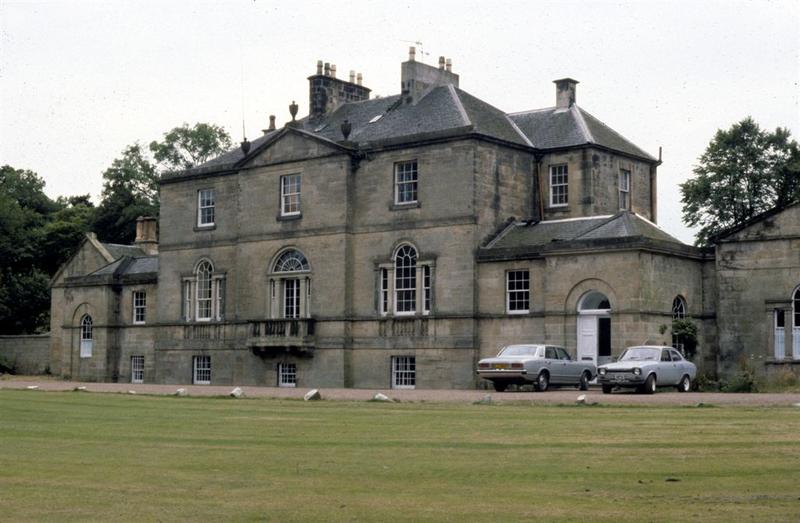

Parkhill
Parkhill House still survives and has sympathetically been converted into flats. The parkland is now known as Grey-Buchanan park, having been donated to the local people by the charitably-minded maiden sisters of the Grey-Buchanan family, the last family residents. Their wealth came from the Black and White whisky company.
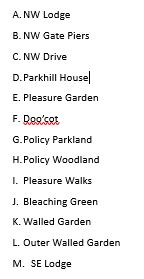

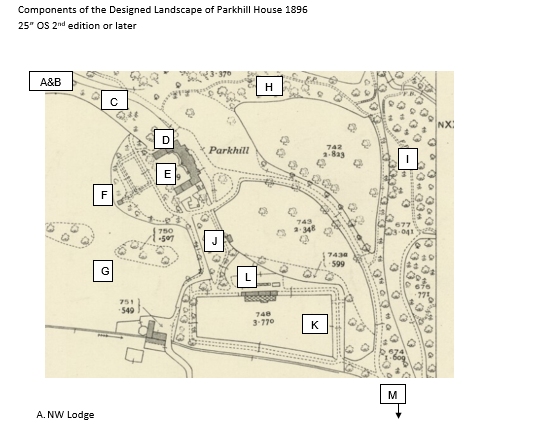

The building is a three-storey oblong with a partially sunken basement. The North-East range projects forward from the main facade forming a gable. Centrally located is a three-light window and fanlight, possibly the entrance to the building in 1790. On the opposite side of the house to the South-West is a central, semi-circular projection with a low conical roof.
Two lodges, the main drive flanked by impressive trees and the doocot (dovecote) can be seen. What was a fine and productive walled garden is now the site of a care home. Many notable trees still survive in the park.
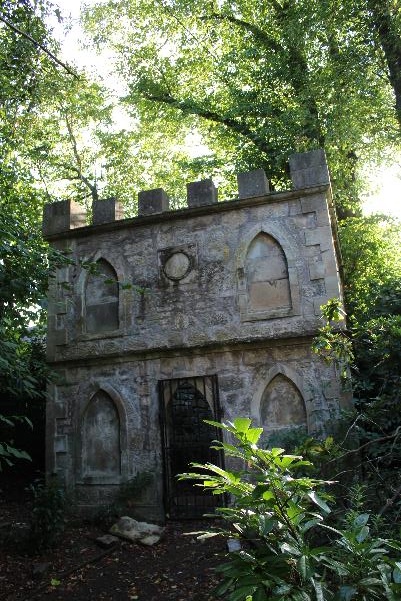

Millfield House
Crossing the Polmont Burn one enters the former Millfield estate by the viaduct built by John Millar, railroad engineer and owner of Millfield. The two estates were amalgamated when he bought the lands of Parkhill in 1854.
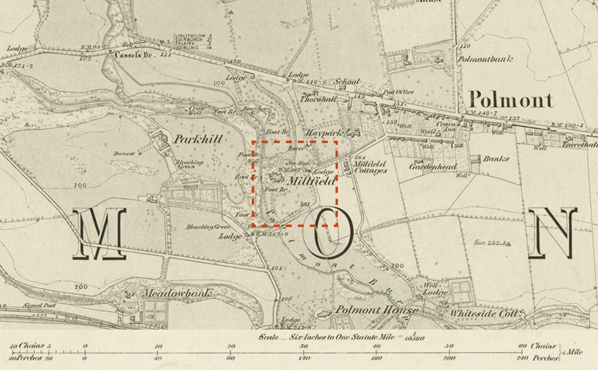

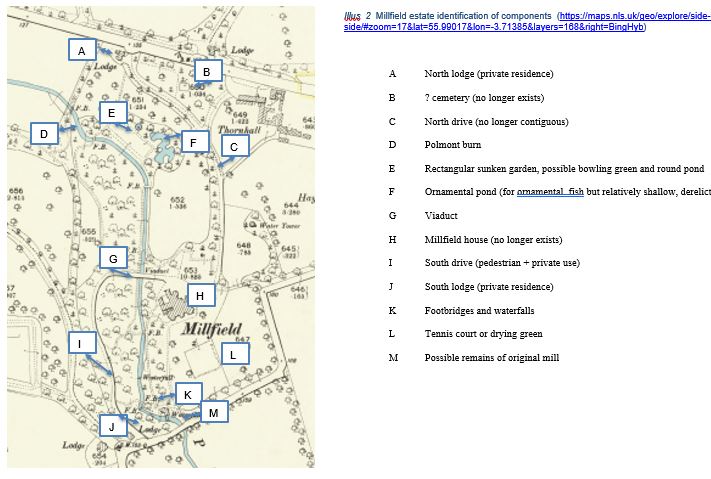

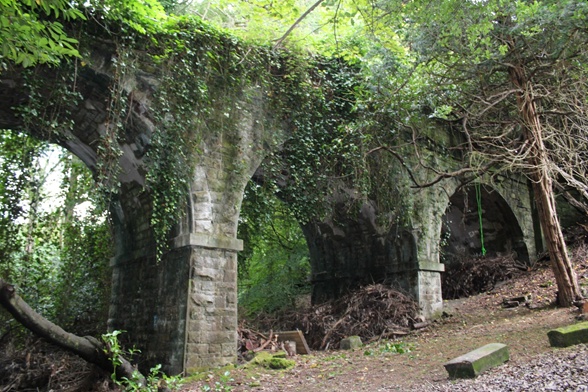

Many fine walks were created in the parkland and along the burn then under one owner. He also improved the landscaping with new trees, shrubs, and flowering plants, particularly along the burn.
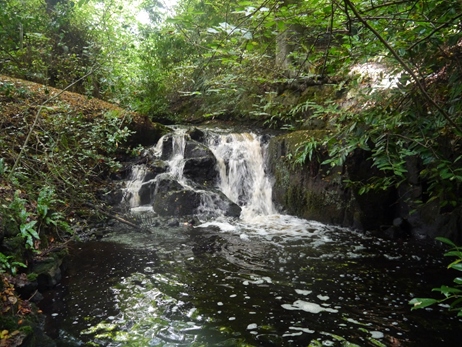

Sadly the house was demolished and the parkland used for modern housing in the 1960s. Many of the features still exist but are completely overgrown and inaccessible.
Timeline
Parkhill
1400s
Earliest building may date from this time.
1573
Estate of “Parkend” owned by Ballantyne family
1788
House and estate acquired by James Cheape of Sauchie. He changed the name to Park Place and then Parkhill.
1790
Current house construction started.
1885
Bought by Alexander W Gray-Buchanan.
19th Century
House extended a couple of times to reach its present extent.
Millfield
1799
Millfield appears and may have referred to an original mill on the Polmont burn.
1842/3
Millfield purchased from Finlay family by John Miller, chief engineer of the Edinburgh and Glasgow railway. He designed a new house to be situated on higher ground overlooking the valley. Shortly afterwards, improvement of the grounds started, aiming to create idyllic nature walks which can still be appreciated today, although at Parkhill rather than Millfield.
Pre-1851
The gardens and grounds were enhanced. For instance, in the glen there was a beautiful bowling green decorated with vases and graceful statues, including the classical figures of Eve, Flora and Diana. Nearby was a shell fountain in the centre of a circular pond and a small pond with goldfish surrounded by rock-work and grottoes, wild plants and strange water-fowl. The stream was canalised and filled with miniature cascades.
1852
Conservatory added to the house.
1854
Adjacent Parkhill lands bought. Walled garden removed, giving preference to that at Parkhill.
1865
Estate sold to Lieutenant John Miller.
1885
Millfield bought by David Mitchell.
1897
Major improvements to the house and new lodge house built to the south.
1912
Sold to John G. Stein, who made his money manufacturing refractory bricks for industry.
1960s
Demolition of Millfield house for housing development.
By Marilyn Scott and Sue Hewer, Scotland’s Garden and Landscape Heritage volunteers.
